feature: Interview with Paul Tanter (The Rise & Fall of a White Collar Hooligan, 2012)
2 Comments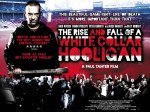 The Rise & Fall of a White Collar Hooligan is the latest film from British indie director Paul Tanter who last year released crime thriller, Jack Falls.
The Rise & Fall of a White Collar Hooligan is the latest film from British indie director Paul Tanter who last year released crime thriller, Jack Falls.
The film follows the story of Mike Jacobs, Mike is unemployed and desperate when he bumps into his old friend Eddie Hill. Eddie’s got a job for Mike, he needs a courier, cash-in-hand, no questions asked. Things are never that simple though and Mike soon finds that his new career has forced him into a decision he doesn’t want to have to make.
We caught up with Paul Tanter to talk about the film, the real-life story that inspired it and how he answers the criticisms bandied around hooligan films
What was the inspiration for this film initially?
It’s based on the real-life story of a guy called Ray (Raheel Riaz), who was recruited by an old friend into a credit card fraud gang. He rose through the ranks, got busted, served some time, got let back out and carried on rising up the ladder until everything ultimately went tits up and he faced the choice of dying at the hands of his old bosses or testifying against them – he chose the latter and is now living in witness protection. The football backdrop and some relationships have been added or tweaked, but when the text card at the beginning says “based on a true story”, it’s true.
This is your second film as director after Jack Falls. Did that experience lead you to direct The Rise and Fall of a White Collar Hooligan and your other films in pre-production and post, and did you always have the idea of getting into filmmaking?
Jack Falls led to White Collar Hooligan insomuch that it was with the same production company and I used several of the actors I used in Jack Falls, but the two films are very different and not directly related. After working with producer/actor Simon Phillips several times on the Jack films, we wanted to do something different and hit upon a great and real story of a guy who got mixed up in credit card fraud. After the scale of Jack Falls, with all the names it featured, we kind of set ourselves a challenge of going back to basics – minimal cast, minimal crew, no going over budget and shoot it in three weeks – and we ended up with our strongest and best film yet!
Since then, we’ve hit our stride and have Riot (Simon’s directorial debut) and The Hooligan Wars currently in post-production. We’ve also just wrapped on an Essex Boys film called Once Upon a Time in Essex, where we used some of our reliable regulars (Nick Nevern, Peter Barrett, Charlie Bond, Ewan Ross), but I also got to direct some people I’d always wanted to work with, such as Kierston Wareing, Robert Cavanah, Tony Denham and Kate Magowan.
Filmmaking is always something I had wanted to work in, but I honestly thought I’d end up in journalism through my love of writing. It was getting to spend time on set as the writer of the first couple of Jack films that led to me being more closely involved in the production side of things and the process of filmmaking itself. Jack Falls was a steep learning curve but I think I’m finding my way as a director and I hope White Collar Hooligan makes a mark.
Do you think hooliganism is being glorified in film, recent examples being The Football Factory, Green Street?
I don’t think it’s glorified – watch the violence that’s inflicted upon anyone in Green Street or The Football Factory and tell me you’d want that to happen to you. Where’s the glamour in getting your head kicked in or knifed? Films too often get accused of glorifying something that they’re just holding a mirror up to, which is funny as no one ever complains about the amount of violence in all the Shakespeare that’s taught in schools.
Do you think film goers will draw many comparisons to past films such as the above?
I think it’s partly inevitable, partly because of the subject matter and partly because of the way the film will naturally be marketed. The thing is; it’s not a “football hooligan film” – it’s a film about a football hooligan who gets involved with white collar credit card fraud – the hooliganism is more of a backdrop. I’m a huge fan of Green Street and The Football Factory, but I think we’re bridging the gap between those films and the crime genre films like Lock, Stock and Two Smoking Barrels and The Long Good Friday. At least, I hope we are!
What type of films are you a fan of yourself and do they influence what you in your film making?
I love all different types of films – I don’t just restrict myself to one genre. Three of my favourites are Withnail and I, Annie Hall and The Blues Brothers. But obviously I love and have been influenced by the gangster and crime genres. Guy Ritchie, Martin Scorsese, Quentin Tarantino, Bryan Singer and Mathew Vaughn have naturally inspired and influenced me and other filmmakers of my generation.
What are some of the major lessons you’ve learned from being a first-time filmmaker to the projects you’ve completed or are working on now?
I think every film is a learning curve, and you take away different lessons from each one. I think I’ve learned how to adapt to the unexpected and how to make things work with the budget and resources we have available. We make films on a certain budget and within a certain time scale – White Collar Hooligan was filmed in just three weeks – so I’ve learned to ensure I keep this in mind when writing, keep an eye on costs whilst shooting, and an try to get as much production value as possible out of my scenes, actors and the resources I have.
The movie certainly has a stylized feel and look. Who are some of your influences, and what were some of the overt choices you made with this movie (on an indie budget)—locations, cameras, etc.– to get the look and feel of Rise and Fall?
We decided to go predominantly handheld for the film. This sped up shooting and also provided the slightly documentary feel that contributes to you feeling like you’re there with the characters. You definitely feel the benefit during the violent scenes as everything feels slightly more real and raw. In terms of locations, we may have been low budget but we still work hard and aim high. We shot in studios in London, on location in Paris and in various football grounds, nightclubs, bars and streets. You don’t feel the low budget because we’re good at delivering high production value with what we have. The film was made on a low budget but I think in terms of quality and production value, you won’t see much of a difference between us and a film made for £1m – £2m.
Did you have to improvise on the shooting script at all, or did most of what was on the page wind up on screen? Any sequences that turned out differently than what you imagined or something that had to be scrapped or completely changed?
Most of what was written is what you see up on the screen, but there were times and scenes where we played around a little. Simon and Nick have a great chemistry together both on and off the screen and there were some scenes they did where there was a little room for improvising and playing around with the dialogue to suit them. I was lucky that I knew in advance who would be playing the characters so I was able to adapt what I wrote to them beforehand.
There weren’t scenes that were massively different to how I imagined but there were a couple where I was very excited about what we had just shot – where the hairs on the back of the next were standing up due to the quality of the performance. One of the best scenes in the film is just Nick and Simon arguing in a bathroom – two guys, small room, no production value, yet the performances as each take went on just got better and better and it’s one of my favourite scenes in the film. I’m lucky to have worked with Simon often, so I know how good he is. And Nick is a great actor – and very under rated.
Any news you can let us into about your future films?
We’ve just wrapped on an Essex Range Rover murders film called Once Upon a Time in Essex, starring Kierston Wareing, Robert Cavanah, Kate Magowan and Tony Denham, with our faithful regulars Peter Barrett, Simon Phillips and Nick Nevern. It’s a new interpretation on the story and looks at the police involvement, which has never been done before. Riot, Simon’s directorial debut, starring Kellie Shirley, Steven Berkoff, Jenna Harrison and Con O’Neill is just completing post production, and one I wrote and directed called The Hooligan Wars is currently in the edit – that features a couple of people I’ve always wanted to work with including Glen Murphy and Lorraine Stanley (London to Brighton). We’re about to start shooting the thriller Shame the Devil and will then move on to White Collar Hooligan 2.

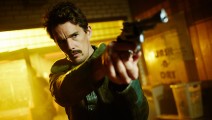
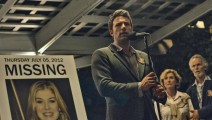
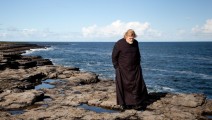
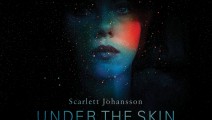


I loved the film just as much as the first one, But I really don’t understand the ending part where katie gets shot,,Maybe I missed something along the way in the film although I am pretty sure I didn’t, All it really says to me is that there is surely going to be a third installment that will explain about it.
I hope someone can explain the ending to me as it is driving me mad trying to work it out and I have watched the last ten minutes of it a few times now and still am completely lost with it.
I hope to hear from someone soon
Many Thanks in advance
Steve AKA Madforit
^^^
Oops,,,sorry,,I was actually referring to the 2nd film and not the 1st one.